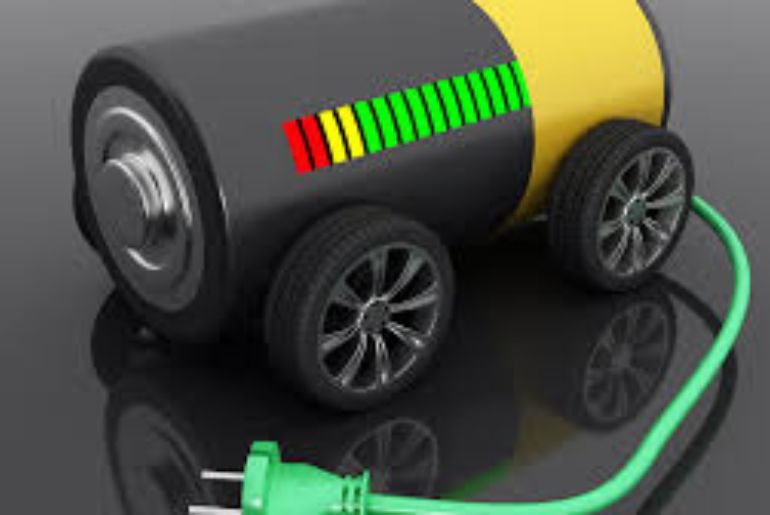The good news is that EVs get cheaper when batteries get cheaper. The bad news is that battery prices in China continue to decline more quickly than in the US.
Batteries are at the centre of the battle for a transportation system with zero emissions. EVs will continue to be costly if battery prices, which are the largest expense of any electric car, continue to rise. However, prices will drop if batteries can be produced or obtained locally and at a low cost.
With its Gigafactory in Nevada, Tesla was able to work this out early on. This is also the reason why automakers like Ford, Toyota, and General Motors are planning their own battery facilities, with differing degrees of success thus far.
- Prices for lithium-ion battery packs fell 20% in 2024, the largest drop since 2017, according to a study from the International Energy Agency (IEA).
- Cheaper batteries mean cheaper EVs, and electric cars and trucks remain the main driver of battery demand.
- China’s price advantage is widening over the rest of the world.
However, there is some good news as all automakers, battery suppliers, and energy providers race towards that future: a recent study by the International Energy Agency (IEA) found that global prices for lithium-ion battery packs dropped 20% in 2024. Since 2017, that is the largest single price decrease.
This predicament can be attributed to heightened competition, greater supply, and rising demand. “Lithium prices, in particular, dropped nearly 20% in 2024, reaching similar prices to those at the end of 2015, despite lithium demand in 2024 being about six times bigger than in 2015,” claimed the paper.
Current surpluses are the cause of the cheap prices of essential minerals, which is excellent for EV costs now but may result in underinvestment later.
According to the survey, battery pack prices decreased across all markets. However, China saw the largest declines, which should come as no surprise. In terms of supply chain security and general technological advancement, that nation is far ahead in the battery race.
“China was responsible for 80% of global battery cell production in 2024, while the remainder was produced in the United States, the European Union, Korea and Japan,” according to the research. “The faster pace of battery cost reduction and innovation in China has been enabled by fierce competition that has driven down profit margins for most producers (though not all), at the same time as driving up manufacturing efficiency and yields, as well as access to a large, skilled workforce.”
It’s interesting to note that, although being much smaller than EV batteries, hybrid batteries are more costly, against popular belief. “The price of such components is spread across fewer battery cells, increasing the price per kilowatt-hour,” according to the research. “In 2024, the average price of a 20 kWh PHEV battery pack—roughly the global sales-weighted average for standard plug-in hybrids—was about the same as a 65 kWh BEV battery pack.”
The market is also being significantly impacted by China’s near-total lead in lithium iron phosphate (LFP) batteries. Long regarded as a less expensive alternative for EVs, LFP batteries’ performance has greatly increased as a result of ongoing development, making them far more appropriate for mass-market automobile use than before.
According to the survey, China is also responsible for about half of the worldwide EV battery market, which is made up of LFP batteries. Because to anti-China tariffs, their use in the US stayed at 10% in 2024, although growing by almost 90% in the EU. Meanwhile, the rest of the world is being mostly dominated by LFP batteries.
“Market penetration of LFP batteries is moving even faster in other markets,” according to the research. In 2024, over 50% of electric vehicle batteries in Southeast Asia, Brazil, and India used LFP. While locally made automobiles, primarily from Tata Motors, are the main driver of LFP uptake in India, imports from China, primarily from BYD, are the main driver in Southeast Asia and Brazil. Meanwhile, Japan and South Korea are also accelerating the development of LFP batteries.
Let’s move on to more good and negative news. The United States is slowly catching up on the first front. “Manufacturing capacity in the United States grew by almost 50%, led by Korean companies attracted by tax credits, which accounted for nearly 70% of the growth in 2024,” according to the research. “This led installed capacity in the United States to surpass that in the European Union, which nonetheless increased by 10% in 2024 despite the Northvolt plant in Sweden being halted following its bankruptcy.”
However, if President Donald Trump’s budget package is approved into law, those tax benefits may soon disappear. Both EV tax subsidies and tax incentives for domestic battery manufacturing are about to be eliminated by the so-called Big, Beautiful Bill. Both are being cut in a current version that was approved by the US House of Representatives and is currently making its way through the Senate.
In the end, the worldwide battery boom is here to stay. However, it is still unclear if America wishes to be included.

